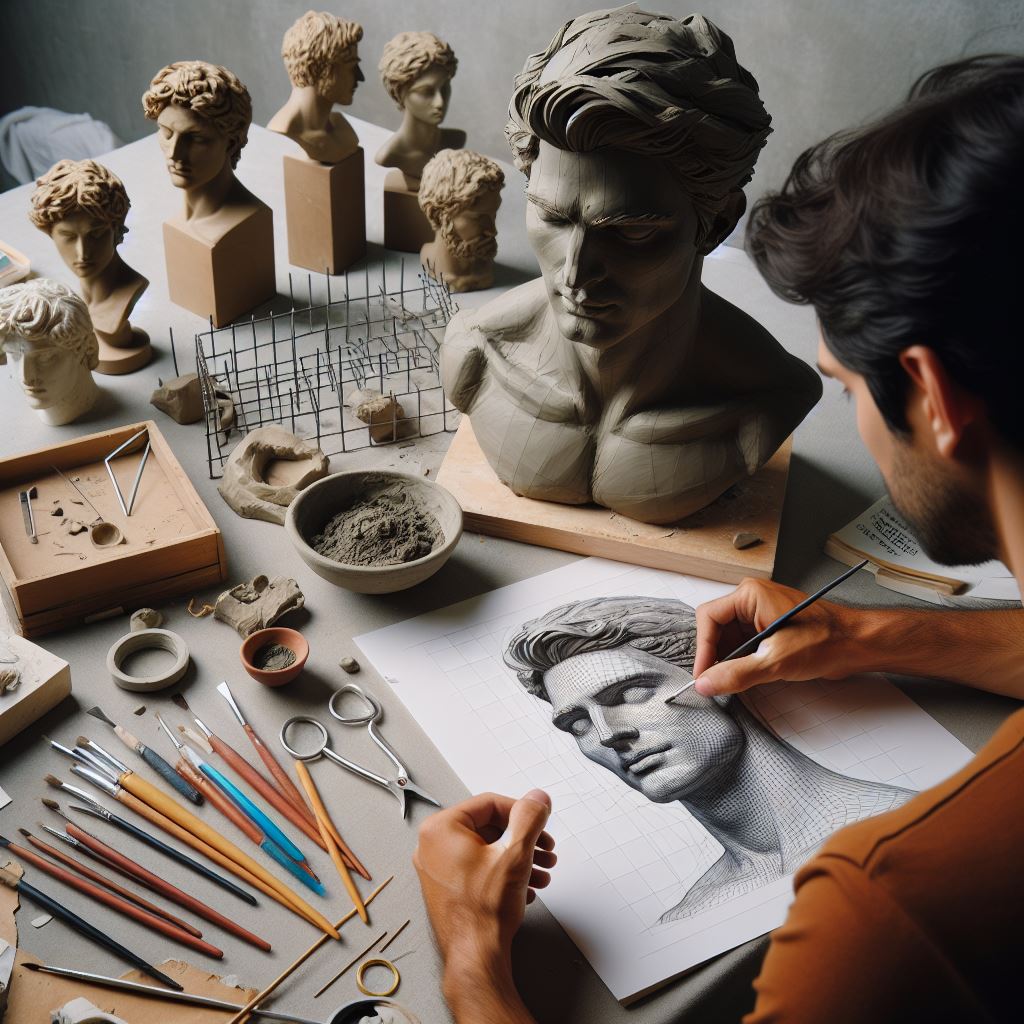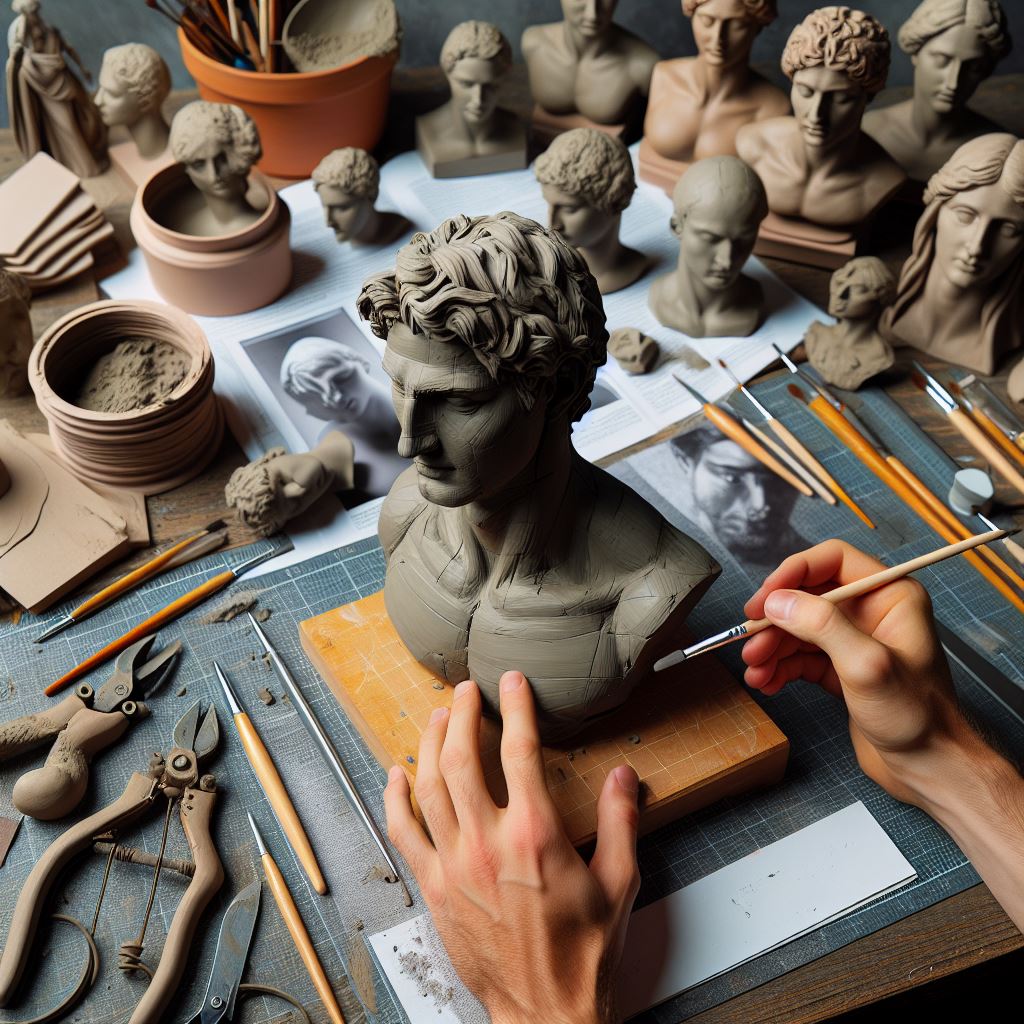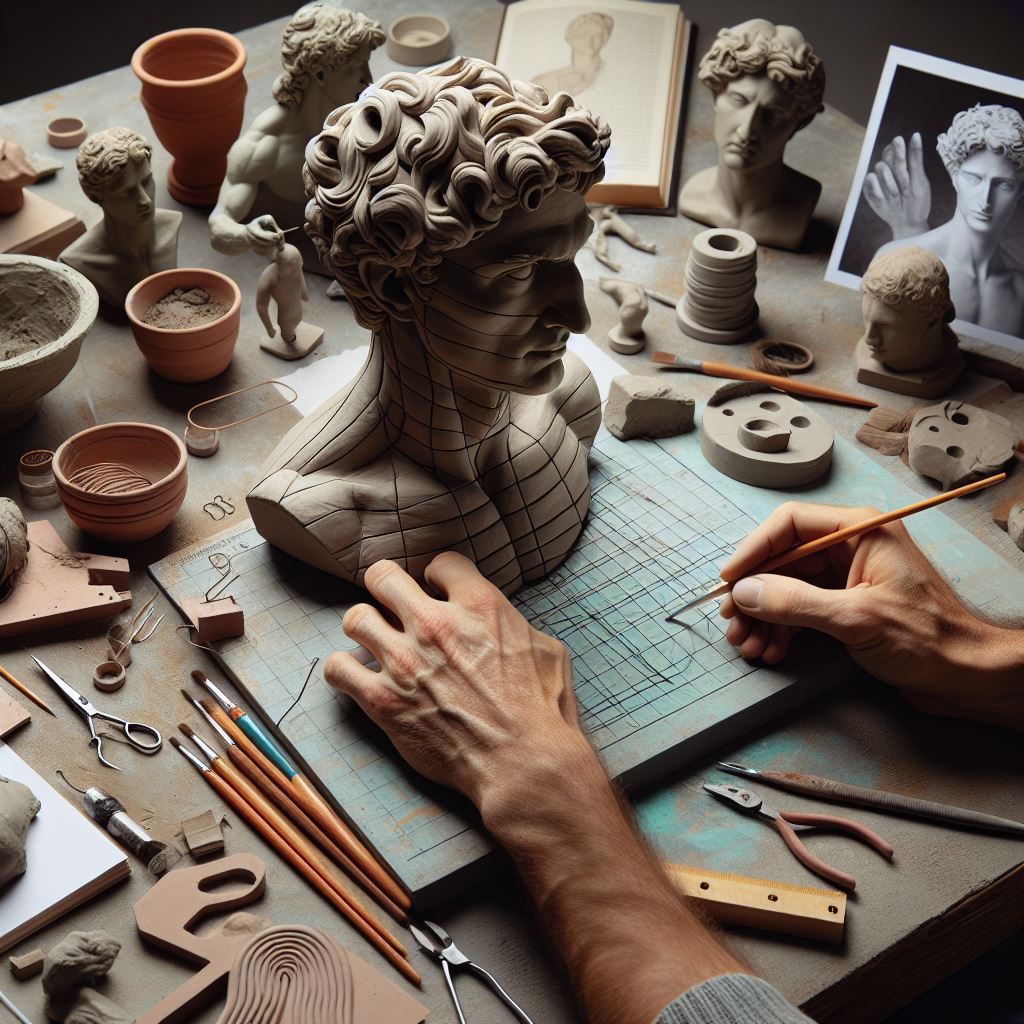Table Of Contents
- 1 Unveiling Sculpting with Mold Making Techniques
- 1.1 A Glimpse into the Essence of Mold Making
- 1.2 Mold Making Techniques: A Tapestry of Possibilities
- 1.3 Mold Making Materials: A Symphony of Form and Texture
- 1.4 Unleashing Creativity with Mold Making Techniques
- 1.5 Defining Sculpting with Mold Making Techniques
- 1.6 The Essence of Sculptural Replication
- 1.7 Expanding the Realm of Mold Making Techniques
- 1.8 Lost-Wax Casting: A Timeless Legacy of Fine Detail
- 1.9 Sand Casting: A Versatile Approach for Diverse Materials
- 1.10 Silicone Mold Making: The Modern Precision for Cast Creation
- 1.11 Investment Casting: Precision Sculpting for High-Quality Results
- 1.12 Exploring the Artistic Possibilities of Mold Making Techniques
- 1.13 Hybrid Techniques and Creative Expression
- 1.14 A Tapestry of Techniques, A Symphony of Creativity
- 1.15 Embracing Experimentation, Unleashing Innovation
- 1.16 A Journey of Continuous Learning and Growth
- 1.17 Celebrating the Artistic Expression
- 1.18 Conclusions:
- 1.19 FAQs
Unveiling Sculpting with Mold Making Techniques

Embark on a captivating journey into the realm of sculpting with mold making techniques, where creativity intertwines with craftsmanship to transform ordinary materials into extraordinary works of art. This enchanting art form has captivated artists for centuries, offering a unique and versatile medium for expressing their artistic vision.
A Glimpse into the Essence of Mold Making
Mold making involves creating a negative space, typically from a three-dimensional object, that captures its form and volume. This mold can then be used to create a cast, which is a duplicate of the original object. Mold making is a fundamental technique in sculpture, as it allows artists to replicate their creations and produce multiple copies.
Mold Making Techniques: A Tapestry of Possibilities
The world of mold making encompasses a diverse range of techniques, each with its own unique characteristics and applications. Some of the most common techniques include:
- Lost-wax casting: An ancient technique that involves creating a wax model of the desired sculpture, which is then coated in a ceramic investment material. The wax is melted away, leaving behind a negative space that is then filled with molten metal.
- Sand casting: A versatile technique that can be used to cast a wide variety of materials, including metals, glass, and ceramics. The process involves creating a mold from sand, which serves as the negative space that replicates the desired sculpture.
- Silicone mold making: A modern technique that uses silicone rubber to create molds of objects. Silicone molds are flexible and can be used to cast a wide variety of materials.
Mold Making Materials: A Symphony of Form and Texture
A wide array of materials can be utilized for mold making, each with its own unique properties and aesthetic qualities. Some of the most common materials include:
- Wax: Offers flexibility and ease of use, allowing for detailed replication of the original object.
- Silicone rubber: Provides excellent detail reproduction and durability, making it suitable for casting a wide variety of materials.
- Clay: Offers a natural and versatile material for creating molds, especially for intricate details or organic shapes.
Unleashing Creativity with Mold Making Techniques
Sculpting with mold making techniques offers a boundless canvas for artistic expression. Let your imagination run wild as you explore the endless possibilities:
- Capture Delicate Figurines: Capture the essence of human figures, animals, or objects with intricate details and refined shapes through mold making techniques.
- Construct Complex Structures: Construct intricate architectural models, intricate sculptures, or abstract forms that showcase precision and creativity through mold making techniques.
- Express Abstract Concepts: Through the manipulation of materials, convey emotions, ideas, and abstract forms that resonate with your inner world through mold making techniques.
- Experiment with Combinations: Venture beyond traditional techniques by combining mold making with other mediums, such as papier-mâché, found objects, or mixed media elements.
Defining Sculpting with Mold Making Techniques
Sculpting with mold making techniques, also known as sculptural replication, is an art form that involves creating three-dimensional sculptures by using molds to reproduce original objects. This process allows artists to capture intricate details and create sculptures that are both visually stunning and durable.
The Essence of Sculptural Replication
Sculpting with mold making techniques involves several key steps:
-
Modeling: The artist creates a physical model of the desired sculpture using a variety of materials, such as clay, wax, or plaster.
-
Mold Making: The artist creates a mold from the model using a variety of techniques, such as lost-wax casting, sand casting, or silicone mold making.
-
Casting: The mold is filled with molten material, such as metal, glass, or clay, to create a replica of the original sculpture.
Sculpting with mold making techniques offers several advantages over traditional sculpting methods:
-
Precision: The mold ensures that the cast replica will be an exact replica of the original model, eliminating the need for human error.
-
Durability: The cast replica is typically more durable than the original model, making it suitable for outdoor or high-traffic environments.
-
Reproducibility: Multiple cast replicas can be created from a single mold, making it a cost-effective way to produce multiple copies of a sculpture.
The world of mold making encompasses a diverse range of techniques, each with its own unique characteristics and applications. Here are a few prominent mold making techniques that have captivated artists for centuries:

Lost-Wax Casting: An ancient and intricate technique that involves creating a wax model of the desired sculpture, which is then coated in a ceramic investment material. The wax is melted away, leaving behind a negative space that is then filled with molten metal. This technique is known for its ability to create sculptures with fine detail.
Sand Casting: A versatile technique that can be used to cast a wide variety of materials, including metals, glass, and ceramics. The process involves creating a mold from sand, which serves as the negative space that replicates the desired sculpture. This technique is simple and easy to use, making it a popular choice for beginners.
Silicone Mold Making: A modern and versatile technique that uses silicone rubber to create molds of objects. Silicone molds are flexible and can be used to cast a wide variety of materials. This technique is becoming increasingly popular due to its ease of use and ability to produce high-quality casts.
Expanding the Realm of Mold Making Techniques
The world of mold making is a vast and fascinating realm, offering artists a diverse range of methods to create intricate and durable sculptures. Each technique has its own unique characteristics and applications, catering to different artistic styles and desired outcomes. Let’s delve into some prominent mold making techniques that have captivated artists for centuries:
Lost-Wax Casting: A Timeless Legacy of Fine Detail
Lost-wax casting, also known as cire-perdue, is an ancient and intricate technique that has endured for centuries, renowned for its ability to capture intricate details and produce sculptures with a mesmerizing sense of realism.
The process involves creating a wax model of the desired sculpture, which is then coated in a ceramic investment material. The wax model is then melted away, and the resulting negative space is filled with molten metal. Upon cooling, the metal solidifies within the mold, creating a cast sculpture that resembles the original model.
Sand Casting: A Versatile Approach for Diverse Materials
Sand casting stands out as a versatile casting technique that can be employed to cast a wide array of materials, including metals, glass, and ceramics. Its simplicity and adaptability make it an approachable technique for beginners and experienced artists alike.
The process of sand casting involves creating a mold from sand, which serves as the negative space that replicates the desired sculpture. This mold can be reused multiple times, allowing for the production of multiple casts.
Silicone Mold Making: The Modern Precision for Cast Creation
Silicone mold making, a modern technique, utilizes silicone rubber to create molds of objects. Silicone molds are flexible and can be used to cast a wide variety of materials. This technique is becoming increasingly popular due to its ease of use and ability to produce high-quality casts.
Investment Casting: Precision Sculpting for High-Quality Results
Investment casting is renowned for its precision and ability to create intricate details, making it a popular choice for artists seeking to produce high-quality sculptures. The technique involves creating a wax or plastic model of the desired sculpture, which is then coated in a ceramic investment material.
After the investment material has hardened, the wax or plastic model is melted away, leaving behind a negative space that is then filled with molten metal. The resulting cast sculpture boasts exceptional detail and durability.
Exploring the Artistic Possibilities of Mold Making Techniques
The versatility of mold making techniques extends beyond the realm of creating precise and detailed sculptures. Artists can also utilize these techniques to explore diverse artistic expressions, including:
Delicate Figurines: Capture the essence of human figures, animals, or objects with intricate details and refined shapes through mold making techniques.
Complex Structures: Construct intricate architectural models, intricate sculptures, or abstract forms that showcase precision and creativity through mold making techniques.
Expressive Abstractions: Through the fluidity of molten materials, convey emotions, ideas, and abstract forms that resonate with your inner world through casting techniques.
Hybrid Techniques and Creative Expression
The boundaries of mold making techniques can be further expanded by experimenting with hybrid techniques, combining casting with other artistic mediums such as papier-mâché, found objects, or mixed media elements. This fusion of techniques opens up a world of creative possibilities, allowing artists to push the boundaries of their artistic expression.
As we conclude our exploration of sculpting with mold making techniques, we stand in awe of the transformative power of this art form. This unique blend of craftsmanship and artistry has opened doors to a world of creative expression, allowing individuals to bring their artistic visions to life through the manipulation of metals, wires, beads, and polymer clay.
A Tapestry of Techniques, A Symphony of Creativity

Sculpting with mold making techniques has showcased the versatility and adaptability of jewelry-making skills. From the intricate details of delicate figurines to the bold structures of abstract sculptures, artists have demonstrated their mastery of wirework, metalsmithing, beadwork, and polymer clay sculpting.
The very essence of mold making lies in its ability to capture the essence of an original object, replicating its form and texture with remarkable precision. Whether it’s the delicate curves of a human figure or the intricate patterns of a leaf, mold making techniques allow artists to immortalize the beauty of the natural world and their own artistic imagination.
Embracing Experimentation, Unleashing Innovation
The spirit of experimentation has been a driving force in the evolution of sculpting with mold making techniques. Artists have pushed the boundaries of convention, combining techniques in unexpected ways, and exploring unconventional materials. This fearless approach has led to the creation of truly unique and captivating sculptures.
One notable example of experimentation is the fusion of jewelry-making techniques with mold making. Artists have incorporated wirework, beadwork, and metalwork into their sculptures, adding layers of texture and complexity to their creations. This fusion has not only expanded the artistic possibilities of mold making but also introduced a fresh perspective to jewelry-making.
A Journey of Continuous Learning and Growth
Sculpting with mold making techniques is a continuous journey of learning and self-discovery. Artists have refined their skills, honed their techniques, and expanded their artistic horizons. This ongoing process has enriched their artistic expression and allowed them to create sculptures that reflect their evolving artistry.
As artists delve deeper into the world of mold making, they encounter new challenges and uncover new possibilities. Each project presents an opportunity to experiment, refine techniques, and push the boundaries of creative expression. This continuous learning journey is an integral part of the sculpting experience, fostering personal growth and artistic development.
Celebrating the Artistic Expression
The world has witnessed the transformative power of sculpting with mold making techniques. Artists have shared their creations through exhibitions, workshops, and online platforms, inspiring others to explore this art form and discover their own creative potential.
Social media has played a significant role in showcasing the artistry and diversity of mold making techniques. Artists have connected with a global audience, sharing their creative processes, tutorials, and inspiring stories. This online presence has not only fostered a sense of community but also provided a platform for artists to receive feedback, connect with potential buyers, and promote their work.
Conclusions:
Sculpting with mold making techniques stands as a testament to the enduring spirit of creativity and craftsmanship. This art form has not only produced captivating sculptures but has also empowered individuals to express themselves through a unique artistic medium.
As we look to the future, we can anticipate further innovations and artistic expressions that will continue to enrich the world of sculpting. With a renewed appreciation for the transformative power of mold making techniques, we invite artists to continue exploring the endless possibilities of this captivating art form.
FAQs
- What is the difference between a lost-wax cast and a sand cast?
A lost-wax cast is a more precise technique that can be used to create sculptures with finer detail. A sand cast is a more versatile technique that can be used to cast a wider variety of materials.
- What are the benefits of sculpting with mold making techniques?
Sculpting with mold making techniques offers several advantages over traditional sculpting methods. These include precision, durability, and reproducibility.
- Where can I learn more about sculpting with mold making?
There are many resources available online and in libraries that teach you how to sculpt with mold making techniques. You can also find workshops and classes offered by local art centers and studios